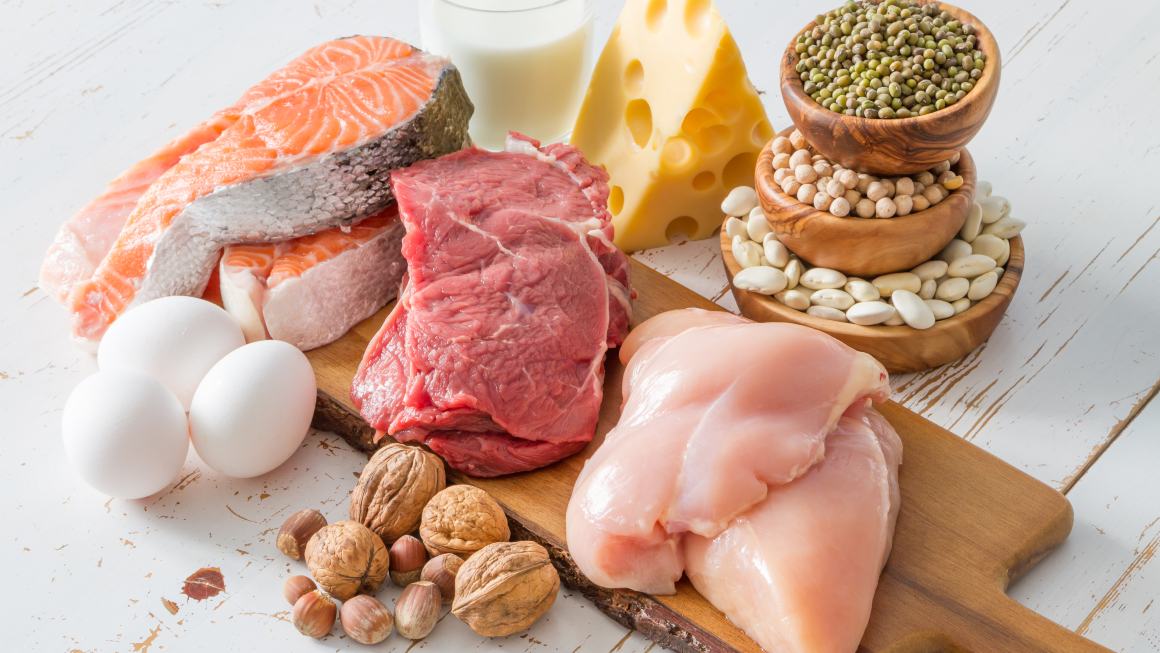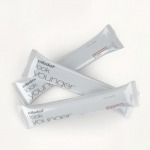Top food sources high in collagen
Published:
Categories: CollagenCollagen is the most abundant protein in the human body. It is the major component of connective tissues that make up several body parts, including tendons, ligaments, skin, and muscles. Collagen has many important functions, including providing structure to your skin, strengthening blood vessels, and supporting bone health.
Contents:
As we age, collagen production declines leading to common signs of aging like wrinkles, brittle nails, and joint pain. Consuming collagen from food sources can help maintain collagen levels and counteract these age-related changes. This article will explore the top food sources high in collagen to help you get more of this important protein in your diet.

What is Collagen and Why is it Important?
Collagen is a structural protein made up of amino acids like glycine, proline and hydroxyproline. It makes up 75-80% of our skin and provides structure and elasticity. Collagen also provides structure and flexibility to other parts of the body like joints, bones, blood vessels, the digestive system, and muscles.
There are at least 16 types of collagen in the body, but around 90% consists of types I, II, and III. Type I is the most abundant and found in the skin, bones, tendons, and ligaments. Type II helps form cartilage, while type III is found in blood vessels and organs.
As we age, collagen production slows down, often resulting in:
- Wrinkles and sagging skin
- Brittle nails
- Weakened muscles and tendons
- Stiff and painful joints
- Weakened bones and increased fracture risk
- Compromised gut lining integrity
Consuming collagen from dietary sources can help supplement the body’s own collagen production to keep levels optimal as you age. Adequate collagen can help maintain glowing, youthful skin, strong nails, flexible joints, sturdy bones and proper gut health.
Top Food Sources High in Collagen
1. Bone Broth
Bone broth made by simmering animal bones and connective tissue is one of the best food sources of collagen. The collagen is extracted from the bones, cartilage, tendons and ligaments during the simmering process.
Bone broths are typically made from beef, chicken or fish. The collagen content depends on the animal source and bone to water ratio. Chicken bone broth contains around 5-8 grams of collagen per cup, while beef bone broth can contain up to 10 grams.
Collagen gives bone broth its jiggly, gelatinous texture when chilled. It also provides other nutrients like amino acids, minerals and glycosaminoglycans. Sipping on bone broth is an easy way to get more collagen into your diet.
2. Chicken Skin
While meat contains some collagen, the highest amounts are found in connective tissues like skin, tendons and cartilage. Chicken skin is very high in collagen - about 14 grams per 100 grams.
The skin contains type I and V collagen which gives the skin its elasticity and strength. Chicken skin collagen is also highly bioavailable, meaning it’s efficiently absorbed and utilized by the body.
Eating crispy chicken skin may not be the healthiest choice overall, but enjoying some in moderation can be an easy way to increase dietary collagen. Try saving chicken skin scraps to add to bone broth.
3. Eggshell Membrane
The eggshell membrane is the thin film between the eggshell and egg white. It contains collagen and other proteins like elastin and fibronectin.
These proteins provide structure and elasticity to the membrane. The main collagen types found are I, V, X and XVIII. About 500 milligrams of collagen can be obtained from one large eggshell membrane.
While not commonly consumed, eggshell membranes can be processed into powders or supplements. They provide an absorbable form of collagen that may support skin, joint and gut health.
4. Gelatin
Gelatin is a protein product made by cooking collagenous animal parts. It has a unique amino acid profile high in glycine, proline and hydroxyproline needed to produce collagen.
It’s estimated that about 98-99% of gelatin is made up of collagen. Gelatin derived from cow or pig bones and skin contains mainly type I and III collagen.
Because gelatin melts when heated, it’s commonly used as a gelling agent in food. Consuming gelatin-rich foods like bone broth jellies, puddings and smoothies can increase collagen intake. Gelatin supplements are also available.
5. Pork Skin
Also known as pork rinds, crispy pork skin is commonly eaten as a snack food. A 1-ounce (28 gram) serving contains about 11 grams of collagen or 44% of the daily value (25 grams).
Like chicken skin, pork skin contains type I collagen that provides structure and flexibility. It also contains elastin which helps tissues regain shape after stretching.
Pork rinds can make a portable, low-carb high collagen snack. However, they are often fried or cooked in unhealthy oils so choose a baked variety when possible.
6. Wild-Caught Fish Skin
The skin of fish like salmon, halibut, cod and tuna contain significant amounts of collagen. A 3.5-ounce (100 gram) serving of salmon skin provides about 6 grams of collagen.
Fish skin collagen includes type I, as well as collagen boosting compounds like hydroxyproline and hyaluronic acid. It supports skin health by promoting elasticity and hydration.
The skin can be crispy fried into chips, although healthier cooking methods like baking are recommended. Canned fish like salmon and sardines also contain collagen-rich bones.
7. Beef Tendons/Ligaments
Tendons connect muscle to bone while ligaments connect bone to bone. Both consist of dense collagen, mostly type I. An 85 gram serving of braised beef tendon or ligament can provide over 20 grams of collagen.
These animal parts are found in dishes like bone-in short ribs, oxtail and chicken feet soup. They must be slowly cooked or braised to break down the tough collagen-rich tissue.
Enjoying the tendons or ligaments as part of the dish provides all the health benefits of their high collagen content. This makes bone-in meat dishes worth including in your rotation.
8. Egg Whites
While not as abundant as the yolk, egg whites contain collagen and other structural proteins like elastin and laminin. Four large egg whites provide about 1-2 grams of collagen.
The collagen in egg whites consists mainly of type I, IV and X. It helps provide elasticity and strength to the egg white to protect the yolk.
Whipping egg whites incorporates air to give foods more volume and lightness. This is possible because of the structural proteins like collagen in the whites.
9. Jellies and Gummies
Jellies, jams and gummy candies contain collagen derived from gelatin. A 1-ounce (28 gram) portion can provide around 5 grams, depending on the brand.
Gelatin-based products support collagen formation by providing the key amino acids glycine and proline. Just keep in mind that excess sugar should be limited.
Opt for all-fruit jellies without added sugars or make homemade jello using grass-fed gelatin and fruit juice for the healthiest choice. Gummy vitamins and supplements are another option.
10. Chicken Cartilage and Feet
Chicken feet are not commonly eaten in many Western countries but they are considered a delicacy in others. Chicken feet consist of skin, tendons, ligaments and cartilage which are rich in collagen.
A 2-ounce (56 gram) serving of chicken feet can provide around 5 grams of collagen. Chicken feet are frequently used to make broths and stews which extract their collagen content.
Chicken cartilage like the breast plate and back tips are also high in collagen. When simmered in soups or stews, these parts add collagen as well as valuable flavors.
Other Dietary Sources of Collagen
In addition to the top food sources, other animal foods contain smaller amounts of collagen:
- Beef, pork and poultry: All meats have some collagen but the amounts are limited compared to bones and skins. Aim for bony cuts like short ribs, oxtail or chicken drumsticks.
- Organ meats: Collagen is found in animal organs like liver, kidney, brain and sweetbreads. Variety meats are rich in nutrients.
- Dairy: Dairy products contain collagen and proteins like elastin which support collagen production.
- Eggs: The yolk and membrane contain collagen, along with zinc, vitamin C and anthocyanidins to support collagen synthesis.
- Seafood: Fish, shellfish and mollusks like clams and oysters contain marine collagen.
While plant foods don’t contain collagen itself, eating plenty of antioxidant-rich fruits, vegetables, nuts, seeds and beans supports collagen production by providing vitamin C, anthocyanidins, zinc, copper and antioxidants.
Collagen Supplements
If getting enough from your diet is difficult, collagen supplements are widely available as powders or capsules. Common types include:
- Bovine collagen: Derived from cows and contains type I and III collagen. Provides around 10 grams per tablespoon of powder.
- Marine collagen: Sourced from fish skin and scales. Provides type I collagen, along with collagen-boosting compounds.
- Hydrolyzed collagen: Collagen that is broken down for better absorption. Provides beneficial amino acids.
- Gelatin: Economical source of collagen peptides. Use powder to make jello or add to smoothies.
Always choose supplements from reputable companies and discuss them with your healthcare provider before use, especially if you have food allergies or intolerances.
Health Benefits of Collagen-Rich Foods
Consuming collagen and gelatin-rich foods offers many benefits:
Supports Skin Health
- Improves skin hydration and elasticity
- Reduces wrinkles and dryness
- Accelerates wound healing
- Improves collagen density and turnover
Relieves Joint Pain
- Helps rebuild cartilage
- Improves joint mobility and flexibility
- Reduces inflammation and damage
Strengthens Bones
- Increases bone mineral density
- Reduces risk of osteoporosis and fracture
- Supports bone remodeling
Promotes Gut Health
- Improves integrity of intestinal lining
- Helps heal leaky gut
- Reduces inflammation and irritation
Supports Heart Health
- Strengthens blood vessels
- Lowers inflammation
- May help control cholesterol levels
Boosts Muscle Mass
- Increases synthesis of creatine
- Reduces muscle loss associated with aging
- Helps regulate protein balance
How to Increase Your Collagen Intake
Here are some tips to increase your daily collagen intake:
- Drink bone broth daily as a snack, in soups or as the base for sauces.
- Save chicken skin and bones to make homemade broth.
- Choose collagen-rich cuts like chicken feet, oxtail or back ribs.
- Make your own jello or gummies using grass-fed gelatin.
- Use a collagen supplement like powder or capsules.
- Eat plenty of antioxidant-rich fruits, veggies, herbs and spices.
- Include eggs, organ meats or shellfish for variety.
- Choose wild-caught fish for dishes like fish stew or tacos.
- Make snacks using roasted chickpeas, nuts and seeds.
- Stay hydrated since water is needed for collagen production.
Collagen-Rich Recipes
Here are some recipe ideas to increase your collagen intake:
Breakfast Recipes
- Vegetable Omelet with Eggshell Powder
- Coconut Yogurt with Berries and Collagen Powder
- Spinach and Cheese Quiche with Pork Skin Crust
Lunch/Dinner Recipes
- Beef Bone Broth Ramen
- Slow Cooker Chicken Feet and Vegetable Soup
- Pan Seared Fish Skin Crisps over Greens
Snacks and Desserts
- Gummy Bears with Grass-fed Gelatin
- Blueberry Collagen Gelatin Parfait
- Pork Skin Chips with Guacamole
Drinks
- Golden Milk Latte with Collagen
- Pineapple Coconut Smoothie with Collagen Powder
- Sparkling Berry Lemonade with Gelatin
Top food sources high in collagen. Conclusion
Collagen is crucial for maintaining youthful skin, strong bones, flexible joints, healthy guts and arteries, and lean muscle mass. Consuming collagen-rich foods provides the amino acids your body needs to preserve collagen levels.
Focus on foods like bone broth, eggs, organ meats, skins, cartilage and gelatin to get more of this important protein. Consider supplements if you cannot meet your needs through diet alone.
Incorporating more collagen-containing foods along with antioxidant-rich fruits and veggies into your meals helps support your collagen needs for optimal health as you age.
Resources used to write this article
Lodish, H., Berk, A., Zipursky, S.L., et al. (2000). Collagen: The Fibrous Proteins of the Matrix. Molecular Cell Biology. 4th edition. https://www.ncbi.nlm.nih.gov/books/NBK21582/
Shoulders, M.D. and Raines, R.T. (2009). Collagen Structure and Stability. Annual Review of Biochemistry, 78, 929-958. https://www.annualreviews.org/doi/full/10.1146/annurev.biochem.77.032207.120833
Varani, J., Dame, M.K., Rittie, L., et al. (2006). Decreased Collagen Production in Chronologically Aged Skin: Roles of Age-Dependent Alteration in Fibroblast Function and Defective Mechanical Stimulation. The American Journal of Pathology, 168(6), 1861–1868. https://www.ncbi.nlm.nih.gov/pmc/articles/PMC1606623/
Asserin, J., Lati, E., Shioya, T., Prawitt, J. (2015). The effect of oral collagen peptide supplementation on skin moisture and the dermal collagen network: evidence from an ex vivo model and randomized, placebo-controlled clinical trials. Journal of Cosmetic Dermatology, 14(4), 291–301. https://onlinelibrary.wiley.com/doi/10.1111/jocd.12174
Clark, K.L., Sebastianelli, W., Flechsenhar, K.R., et al. (2008). 24-Week study on the use of collagen hydrolysate as a dietary supplement in athletes with activity-related joint pain. Current Medical Research and Opinion, 24(5), 1485-1496. https://www.tandfonline.com/doi/abs/10.1185/030079908X291967
König, D., Oesser, S., Scharla, S., Zdzieblik, D., Gollhofer, A. (2018). Specific Collagen Peptides Improve Bone Mineral Density and Bone Markers in Postmenopausal Women—A Randomized Controlled Study. Nutrients, 10(1), 97. https://www.mdpi.com/2072-6643/10/1/97
Zhang, Y., Lin, C., Xia, M., et al. (2020). Effects of Collagen Tripeptide on Atherosclerosis in ApoE−/− Mice and the Mechanism Involved. Journal of Agricultural and Food Chemistry, 68(11), 3262-3271. https://pubs.acs.org/doi/10.1021/acs.jafc.0c00839
Kim, S.K., Kim, Y.T., Byun, H.G., Park, P.J., Ito, H. (2001). Purification and characterization of antioxidative peptides from bovine skin. Proceedings of the National Academy of Sciences, 98(14), 7928-7933. https://www.pnas.org/doi/10.1073/pnas.131208198
Elleuch, M., Bedigian, D., Roiseux, O., Besbes, S., Blecker, C., Attia, H. (2011). Dietary fibre and fibre-rich by-products of food processing: Characterisation, technological functionality and commercial applications: A review. Food Chemistry, 124(2), 411-421. https://www.sciencedirect.com/science/article/pii/S0308814610016202
Sign up to our newsletter and enjoy 10% off one order
YOU MIGHT ALSO LIKE
Post related products
-

Look Younger CIBD0073


















